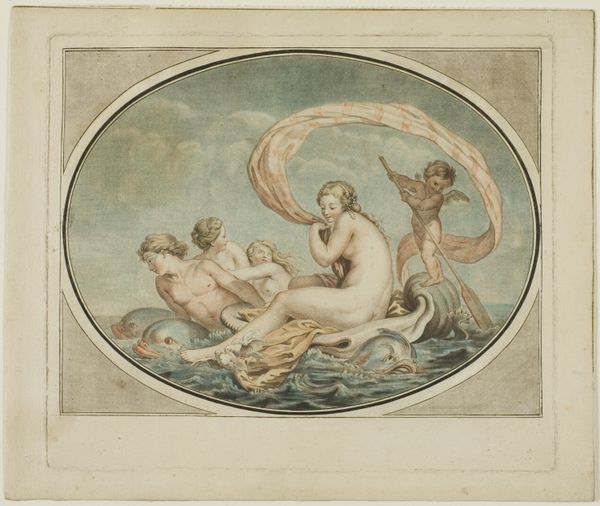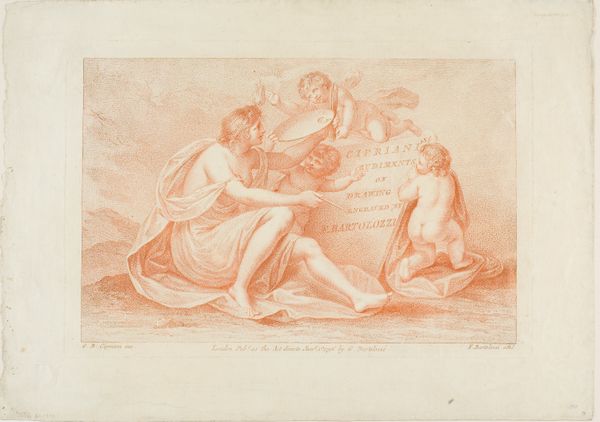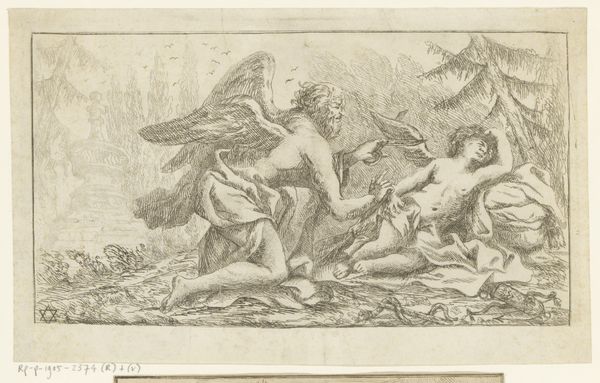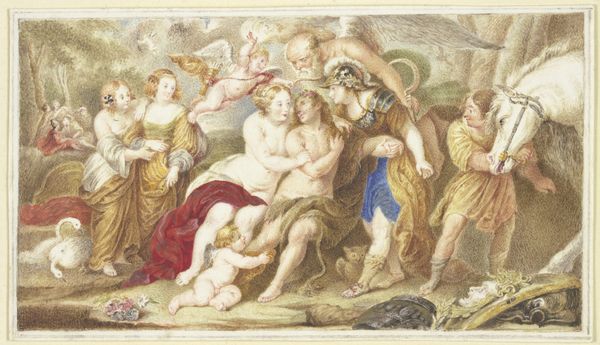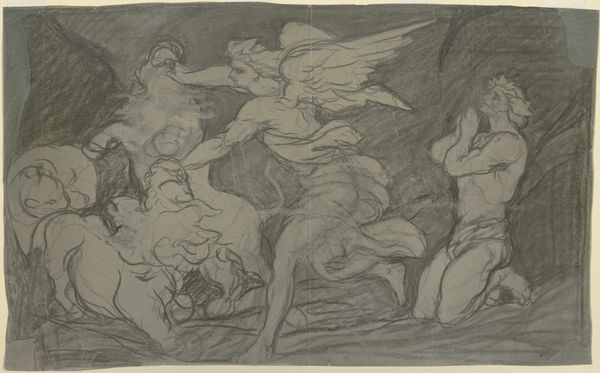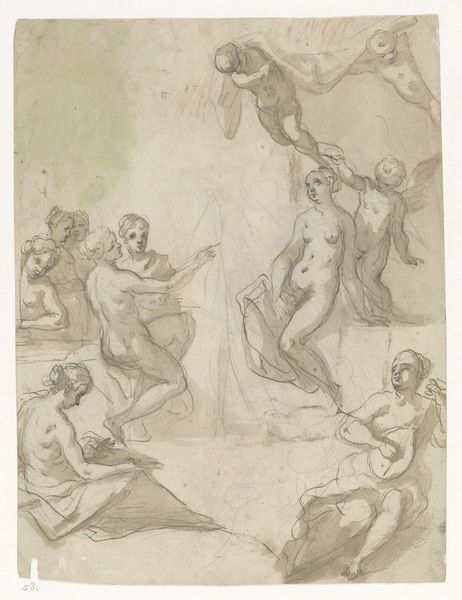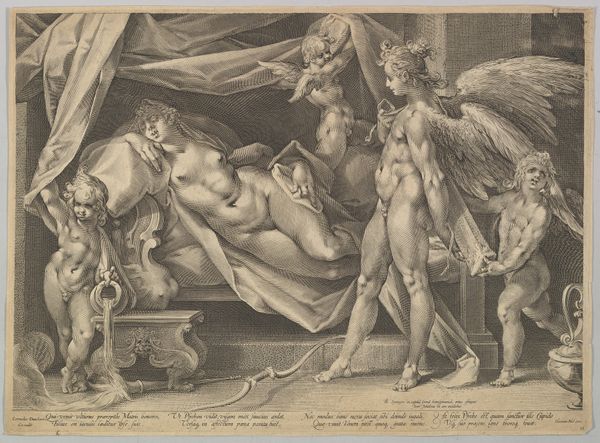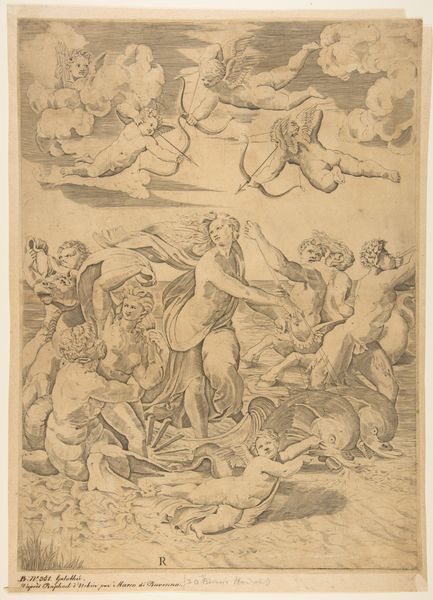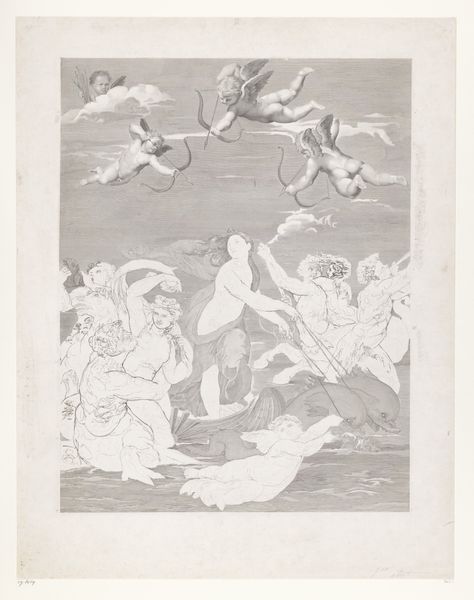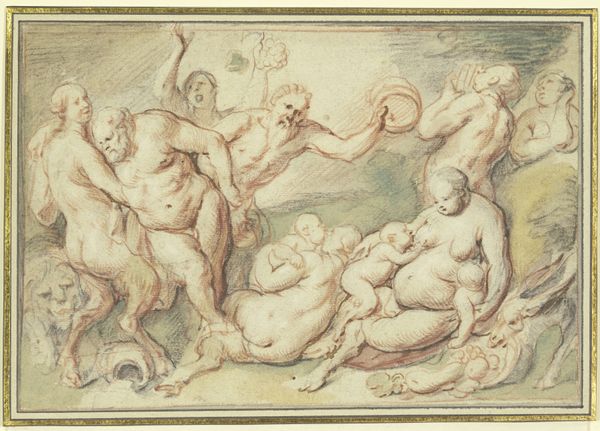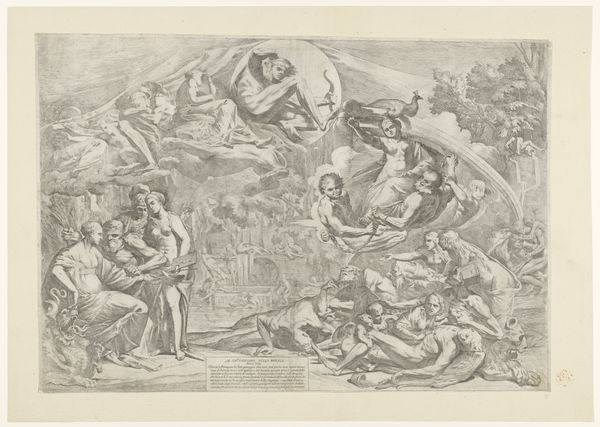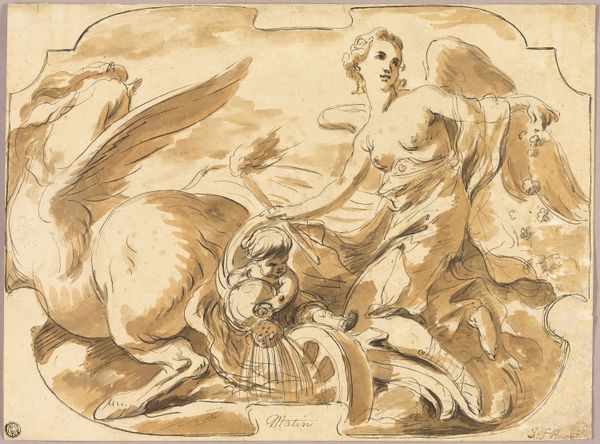
drawing, paper, watercolor, ink
#
drawing
#
allegory
#
landscape
#
figuration
#
paper
#
watercolor
#
ink
#
romanticism
#
academic-art
#
nude
#
watercolor
Copyright: Public Domain
Curator: This delicate drawing, rendered in ink and watercolor on paper, is titled "Allegory of an Artist." It comes to us from Bonaventura Genelli, though the date of its creation remains unknown. The work is currently held here at the Städel Museum. Editor: Immediately, I’m struck by its placid melancholy. The muted palette and languid figures create an atmosphere of… almost world-weariness. It's visually arresting, but the emotional tone seems oddly muted, especially for an allegory. Curator: Allegories often work on many layers. Let’s consider the characters, figures we have seen many times through the ages, and the traditions of their use. We see what appears to be Amor or Cupid and we see an artist surrounded by others who symbolize creative gifts or tools. Think, then, of the long association of Love with creative action. Amor in art could easily suggest that it is inspiration that sets creation into motion. Editor: I agree, though I’m intrigued by this artist’s apparent despondency. The image seems to complicate the romantic ideal of artistic creation. This piece evokes a feeling of profound isolation, even alienation from the wellspring of inspiration. Could we read this allegory, then, not just as an image of creation, but one of creative struggle, doubt, or even burnout? Curator: Indeed. Symbols gain depth from personal and cultural inflection. We might remember the myth of Cupid—a god associated with whimsy and the arrows of attraction, a powerful figure connected, by extension, to mortality and death. Here we could have all of those symbols layered into the idea of the artist struggling against inspiration, using it, succumbing to it. Editor: Right, this reminds me that Romanticism itself contained a strain of self-doubt. While celebrating the power of the individual, Romantic artists and intellectuals often grappled with the feeling of being overwhelmed, almost dwarfed, by forces beyond their control. We also should consider that Genelli himself lived through a tumultuous period in European history marked by the rise of industrial capitalism. This image is almost the anti-thesis of triumph. Curator: Thank you. This image has much to tell us about where symbols come from, how they are layered over time, and how we should consider their presence, especially their cultural and emotional weight. Editor: And it's a poignant reminder that creativity isn’t always a euphoric experience. Sometimes, it is an uphill battle.
Comments
No comments
Be the first to comment and join the conversation on the ultimate creative platform.
